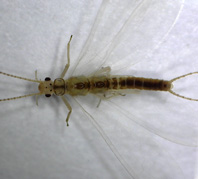Abstract
The relationships among Old World chats and flycatchers (Muscicapidae) have recently been clarified in two independent molecular phylogenetic studies (Sangster et al. 2010, Zuccon & Ericson 2010). Both studies recovered a well-supported clade of predominantly blue flycatchers of the genera Niltava, Cyornis, Eumyias and Cyanoptila, some species traditionally included in the genus Rhinomyias and one species traditionally included in Ficedula (F. monileger). The family-group name Niltavinae Sangster, Alström, Forsmark & Olsson, 2010, was introduced for this clade (Sangster et al. 2010). Unfortunately, our description of the new taxon Niltavinae did not include a diagnosis (sensu ICZN article 13.1.1) and thus inadvertently made this name unavailable for nomenclatural purposes (Zuccon 2011). The supplementary data associated with our original paper included evidence by which the taxon Niltavinae can be diagnosed: a 1 base pair (bp) deletion in the ornithine decarboxylase gene, as shown in Figure S1 in the online version (doi:10.1016/j.ympev.2010.07.008), but this was not mentioned in the printed version of our paper. Given that Niltavinae Sangster, Alström, Forsmark & Olsson, 2010 represents a nomen nudum, and the clade for which this name was intended thus remains unnamed, we here provide the following description:
References
Blyth, E. (1843) Mr. Blyth’s monthly report for December meeting, 1842, with addenda subsequently appended. Journal of the Asiatic Society of Bengal, 12, 925–1011.
Blyth, E. (1847) Notices and descriptions of various new or little known species of birds, Part II. Journal of the Asiatic Society of Bengal, 16, 118–157.
Cabanis, J. (1850) Museum Heineanum. Verzeichniss de ornithologischen Sammlung des Oberamtmann Ferdinand Heine, auf Gut St. Burchard vor Halberstadt, 1. Theil, de Singvögel. Frantz, Halberstadt, 233 pp.
https://doi.org/10.5962/bhl.title.112135Hodgson, B.H. (1837) Indication of a new genus of Insessores, tending to connect the Sylviadae and Muscicapidae. India Review, 1, 650–652.
International Commission on Zoological Nomenclature. (1999) International Code of Zoological Nomenclature. Fourth Edition. The International Trust for Zoological Nomenclature, Padova, XXIX + 306 pp.
Sangster, G., Alström, P., Forsmark, E. & Olsson, U. (2010) Multi-locus phylogenetic analysis of Old World chats and flycatchers reveals extensive paraphyly at family, subfamily and genus level (Aves: Muscicapidae). Molecular Phylogenetics and Evolution, 57, 380–392.
https://doi.org/10.1016/j.ympev.2010.07.008Zuccon, D. (2011) Taxonomic notes on some Muscicapidae. Bulletin of the British Ornithologists’ Club, 131, 196–199.
Zuccon, D. & Ericson, P.G.P. (2010) A multi-gene phylogeny disentangles the chat-flycatcher complex (Aves: Muscicapidae). Zoologica Scripta, 39, 213–224.
https://doi.org/10.1111/j.1463-6409.2010.00423.x

